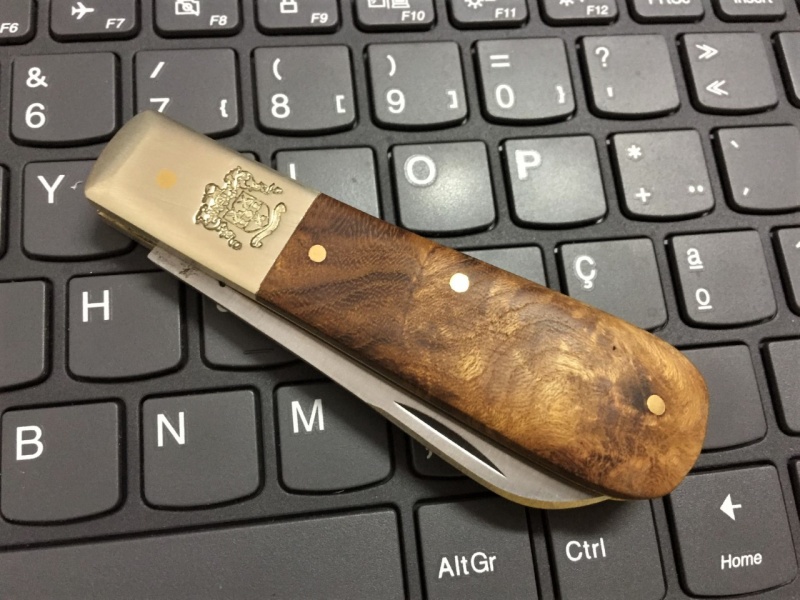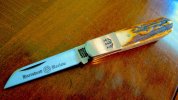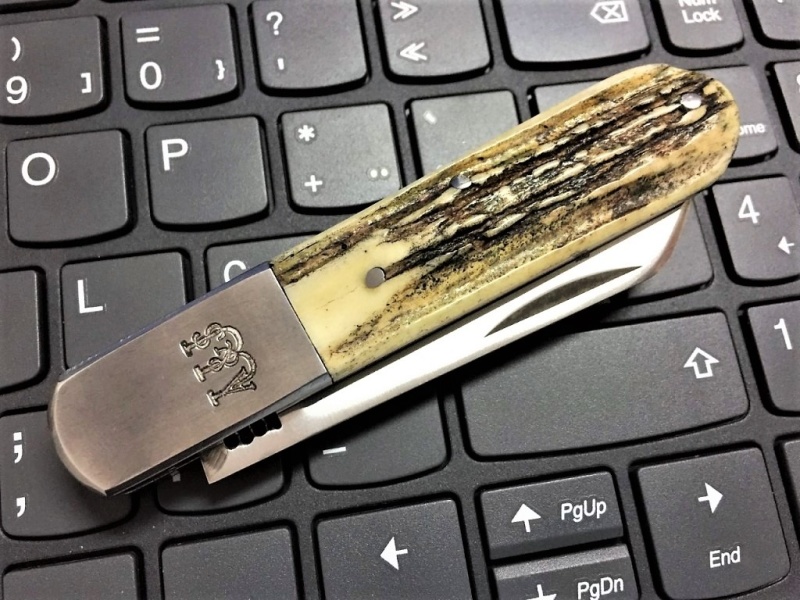Thank you very much for this Ed, this is a fascinating subject for me, so I greatly appreciate your reply. There are no fools here, we're all learning, and hopefully others can learn from your investigation. You are best placed to date your knife because you have it in hand Ed, but I think it's worth appreciating that there are certain differences between the way a Sheffield knife is manufactured and an American one, as these things can easily throw one off. For reasons which I have gone into before (but which I'm happy to go into again), I think they're also considerably harder to date, and it's very rare that you can date a Sheffield knife to within a couple of decades, let alone a few years. Your knife isn't held together with 'pins' strictly speaking, though a Sheffield cutler would call them that, but by lengths of wire. Holes are drilled in the liners and covers, and the wire is fed in in short lengths. The wire is peened on the inside (which is why they are slightly domed), and when the knife is assembled, the lengths of wire are snipped off, and in the case of an irregular surface, such as stag, are peened flat, and in the case of regular surfaces, such as wood, they are ground smooth. That is how Sheffield knives were made a hundred years ago, and they are still made the same way today. If you look carefully inside one of your modern Lambsfoot knives, you will be able to see the peened ends of the 'pins', just like on your old Harrison Brothers & Howson knife. So that form of construction doesn't help us with dating a Sheffield knife unfortunately. Steel liners were still being used in the 1980's, and even today, so in itself, that doesn't help either, though I think it's an indication of an older knife. Lambsfoot knives have always been working knives, so nickel silver bolsters would tend to indicate a later knife, but it would be useful to have sight of a Harrison Brothers & Howson catalogue, to see if, unusually, they made an earlier ones. The style of the bolster is not typical of an early 20th century Sheffield Lambsfoot, but that does not mean it is not from that period. In terms of stag, intuition is not a bad thing to go on, along with your experience of course, but stag is often decades old when it is used, and 50 year old stag is old stag. In terms of the blade, can that tell us anything? If it is hand-forged, hand-forging was still going on in Sheffield well after WW2. The kick is much the same as we might see on a Sheffield knife today. Might I suggest looking at the stamp, these can also be very misleading (again for reasons I've posted about before, but am happy to explore again), but you can probably find examples of other Harrison Brothers & Howson stamps online (well I know you can!), not just the stamps, but their style, and the fonts used. However, beware of dates given by sellers in relation to those stamps. Finding catalogue images would be a great help. This is an example of an early 20th century Harrison Brothers & Howson tang stamp (I know it's from that period because it's on a military knife, the pattern of which I can date):

My apologies for the very poor quality image (I'll try and get a better one tomorrow, and find some more examples - I actually got out of bed to make this post, found the knife, and snapped the pic in poor light in my kitchen!). It might be worth noting the kick on that knife too.
Here's a Victorian one:
You'll find others online, and you may find knives with the same stamp as on your Lambsfoot knife (though bear in mind that the same stamp could be used for decades). The fonts used on older stamps tends to be different to those on newer stamps (and note the small 'S' in 'Bros' for example).
We know that the Lambsfoot doesn't date back before the late 19th century, but became popular quickly. Someone like
H
herder
, with his superb collection of Sheffield catalogues, may have an idea when Harrison Brothers & Howson put the first Lambsfoot in their catalogue, or at least be able to narrow it down. Lots to think about (I'm off back to bed!)



:

JohnDF inspired of ‘Show Your Lambsfoot with Some Old Tools’.
















